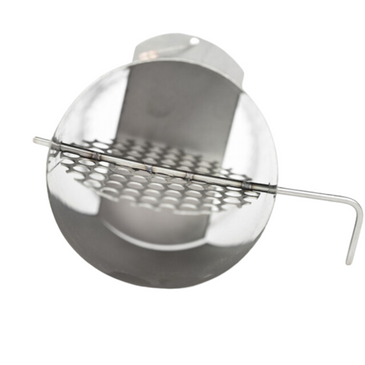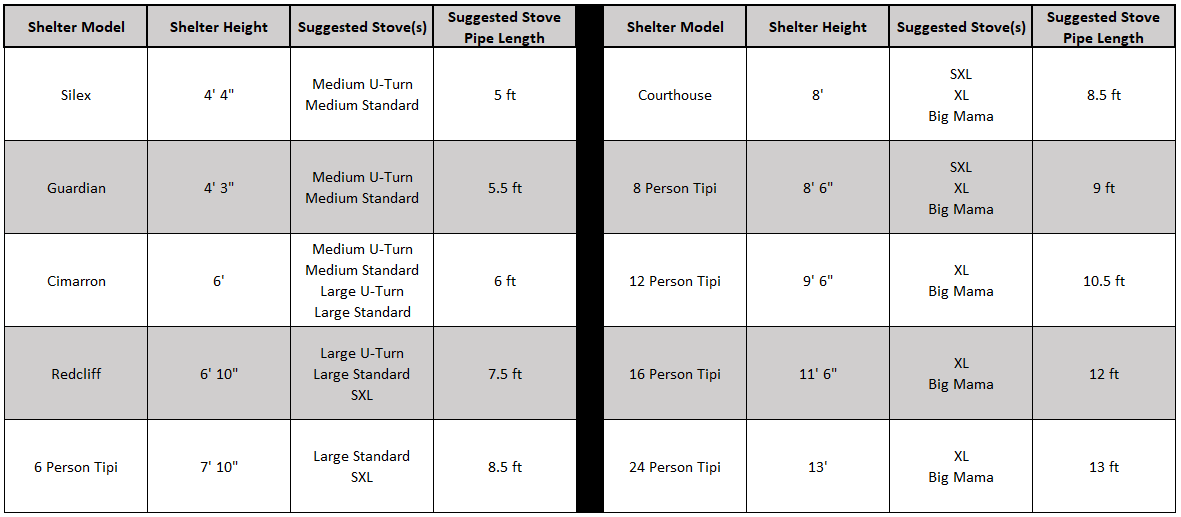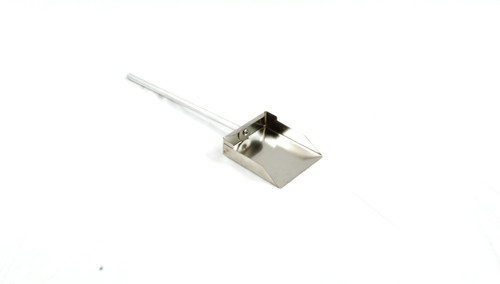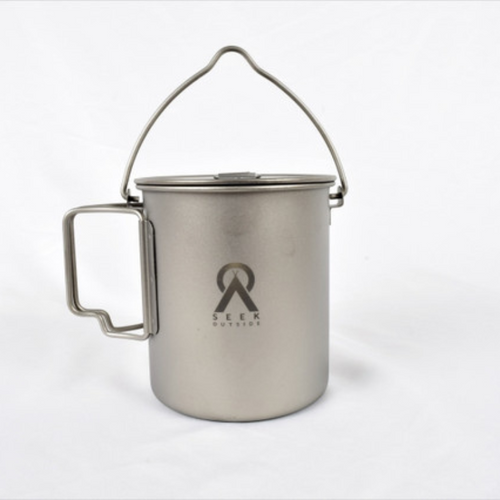
Extra Large Titanium Wood Stove & Stovepipe
OVERVIEW:
Seek Outside stoves are cut, bent, and built with computer controlled equipment to ensure precise and uniform dimensions. Feel secure in knowing that our stoves are the highest quality of their type, with tight tolerances that control air flow through the firebox and materials that will last through years of tough use.
We design our stoves to be a blend of strength, durability, ease of use, heat transfer, and weight. Titanium is very light, tough, and handles high heat loads very well.
Our stoves feature a front intake control, tight tolerances, and a functional damper that allows you to easily control airflow through the firebox. The flat top makes cooking a breeze. Our stoves are built well enough that if you're good with your fire starting you can have a cup of boiling water only 6-7 minutes after lighting the flame.
Select stove pipe length using the chart below. Stove does NOT include pipe unless you select a pipe length.
Tent stoves can be dangerous. Fire is extremely hot and should be handled with caution. Misuse can lead to serious injury or damage. By using our tent stoves, the user assumes all risk and responsibility. We are not liable for any damages, injuries, or negligence related to their use. Practice safe handling and fire safety at all times. Purchasing this stove signifies your agreement to these terms of use.
Features:
- Titanium construction
- Intake control
- Sliding door
- Damper with integral spark arrestor
- Stove packs down to roughly 10.25" X 14" X 3" tall
- Stovepipe rolls up to roughly 12" long cylinder 3 1/8" in diameter (held in place by pipe rings)
- Adding a glass door? Don't worry, you will still receive the titanium door as well!
What to Expect:
Stoves add comfort, the ability to dry gear, and gives cold weather trips an element of enjoyment and fun that is lacking without the stove. They allow you to go to bed warm and dry, and to warm up first thing in the morning. They can also extend or replace cooking fuel weight.
They don't however, replace sleeping gear insulation. The stoves burn hot and fast, but to keep the temps up they need to be fed regularly. So if you have a forecast for 0° then you should have a 0° rated bag, unless you want to stay up all night stoking the fire.
Longer burn times require larger wood. If you prep larger wood you can get through the night with 3-4 stokings. In our opinion a good beefy knife for batoning rounds and a good quality folding or lightweight saw are all the tools you need for wood prep, and are superior to a hatchet or axe for most users.

Made in the U.S.A from the best materials sourced both domestically and globally
Specifications:
- Burn Chamber 10.25" Tall / 10.25" Wide / 14" long
- Height with legs 15 inches
- Weight of Stove including Damper, legs, hardware, and Storage bag, is 50 oz.
- Stovepipe weighs 2 oz per foot
- Made in CO, USA

Comes With:
- Stove box (front, back, sides, top, bottom, door)
- Legs & hardware needed to assemble
- Intake control
- Damper
- Spark arrestor
- Zippered storage bag
- If purchased with stovepipe, we send enough pipe rings for the pipe length selected
Instructions:
- Stove Assembly - lay bottom out and assemble sides, back, front into the grooves. Put top on, then keeping pressure on top and bottom insert one leg from bottom through top. Install wingnut on top, then install wingnut on bottom and tension. It is much easier to install the next three legs, just repeat the process. The flat based weld nuts are feet.
- When burning for the first time, do not over tighten the stove box or you will cause warping.
- Clean the titanium before the first burn - any fingerprints will heat set and be there forever.
- Pipe Assembly - The pipe is a bear to roll the first time, but after burning it is a cinch. The first burn heat sets the pipe, and gives it memory of the stovepipe shape. To roll it the first time, take your time, and wear gloves. Start on one end, carefully rolling the pipe into an elongated cone shape until you can slip the first ring on. Milk that ring down the pipe slowly, adding more rings as you go. Alternatively, you can use two or more people to make the job go quicker. The lazy man's way is to take a long piece of PVC and use that to help roll the pipe into shape.
- The pipe goes around the damper. Slide the lower pipe ring up to give some room for expansion, slip the pipe over the damper, then lower the pipe ring to tighten.
- Make sure there are no crinkles or creases in the pipe before the first burn, or they will be there forever.
- Fire Starting - Wetfire, Instafire, trioxane, commercial paraffin wax infused cardboard products (sold for starting charcoal grills), or vaseline soaked cotton balls all work great for starting fires in our stoves. With one of these lit in the middle to back of the stove, start by placing small twigs or shavings on top, leaving plenty of breathing room until it's going well. Once a good coal bed is going you can place rounds in. More traditional fire starting with jute twine, charcloth, flint and steel, shavings, etc, are crazy fun but unfortunately not in our stoves. The door size limits access and the commercial or home prep fire starters work better.
- Advanced Tip - A handy DIY solution to keep the damper in the position you want is to source some small coil springs and e-clips from a hardware store. Put the spring on the damper control (the shepherds crook side) so that it places tension against the damper pipe. Back this spring with an e-clip (retainer clip) and the damper stays put. You'll burn through the spring after a few good fires, but they only cost cents per piece, so it's cheap to have several in your stove bag.
TOP ACCESSORIES:
Comparison Chart
WARRANTY:
Defects in manufacturing and material for the practical lifetime of the product. Damage due to wear and tear or misuse will be repaired for a reasonable charge.












